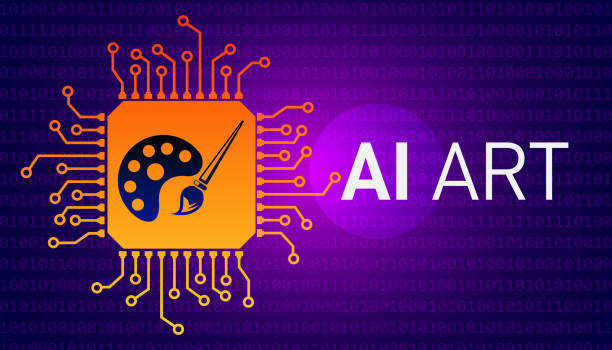In the bustling arena of technology, where Big Tech and ambitious start-ups vie for prominence, one phenomenon that has captured the imagination is AI art. From captivating chatbots to awe-inspiring art generators like Lensa, the landscape is evolving at a breakneck pace. In this journey, we explore the depths of Artificial Intelligence art, its controversies, and the diverse Artificial Intelligence models that bring digital canvases to life.

The Foundation
Before delving into the wonders of AI art, it’s crucial to comprehend what Artificial Intelligence itself entails. At its core, Artificial Intelligence (AI) simulates human intelligence in machines. This emulation relies on training computers with vast datasets about the world, a process known as machine learning. The key to enhancing AI lies in feeding it copious amounts of data, refining its understanding of the subject matter.
AI and Art: A Creative Symphony
When it comes to generating art, the fuel for Artificial Intelligence is predominantly images. By immersing AI in a plethora of images, it learns to recreate what it sees. Picture this: feed it thousands of fire hydrant images, and voila, it can conjure a fire hydrant masterpiece on demand. The evolution doesn’t stop there; now, accessible services allow computers to craft art solely through algorithms and prompts.
The Timeless Roots of AI Art
Contrary to popular belief, such art is not a recent marvel. Its roots trace back to the 1950s, entwined with the early days of computer graphics. What started with simple patterns and shapes has evolved into intricate artworks, propelled by advancements in computer science. The recent surge in accessibility, propelled by open-source databases and social media, has thrust Artificial Intelligence art into the public spotlight.
The Controversial Canvas: Why to sparks Debate
As AI art gains accessibility, it stirs a cauldron of controversy. One pressing issue revolves around copyright concerns. Artificial Intelligence art generators scour the internet for existing artworks to learn from, often mimicking styles without permission or credit. This raises ethical questions about the exploitation of artists’ works and the potential threat to traditional art commissions.
The Grey Areas of Ownership and Bias
The debate over ownership of AI-generated art remains unresolved. U.S. copyright rules currently deny copyright for AI art due to its lack of “human authorship.” Additionally, concerns about AI bias pose challenges. If AI learns from biased datasets, it may perpetuate stereotypes in its creations, raising the need for algorithmic diversity and regulatory frameworks.
Types of AI Systems
- Generative Adversarial Network (GAN): A dance between a generator and discriminator, creating a feedback loop for improved image generation.
- Convolutional Neural Networks (CNN): Masters at identifying patterns, generating images with enhanced recognized features.
- Neural Style Transfer (NST): Transforms images into the style of another, producing artistic outcomes.
- Machine Learning: Utilizing datasets for learning, either through reinforcement learning or traditional learning methods.
- Creative Adversarial Network (CAN): Mimicking human creativity, producing random and surprising artworks.
- Embodied AI: Control over physical objects, like a robotic arm, to create physical artworks.
Embracing the Controversy: Popular AI Art Generators
Despite controversies, these generators thrive, capturing the imagination of curious minds. Artists embrace them as collaborators, and here are some notable ones worth exploring:
- DALL-E 2: OpenAI’s creation, generating images based on text prompts.
- Deep Dream Generator: Creates images from existing photos or text prompts.
- Lensa AI: A mobile app transforming selfies into customized works of art.
- Runway ML: Edits videos using text prompts, focusing on color grading and frame interpolation.
- Stable Diffusion AI: Enables the creation of intricate artworks with simple text prompts.
Unmasking the AI Art: How to Spot the Digital Artistry
As digital art becomes pervasive, distinguishing AI-generated pieces becomes a challenge. Here are some ways to uncover the digital brushstrokes:
- Explore Descriptions and Comments: Look for disclosures or discussions about AI use.
- Anomalies in Artwork: Results may have visual oddities, but this method is subjective.
- AI Watermarks: Some generators leave distinctive watermarks, though these can be removed.
Masterpieces and Mischief
Years of progress in computer science have birthed astonishing AI-generated artworks, ranging from adorable to mind-bending. Take a peek at some noteworthy examples:
- A sea otter in the style of ‘Girl with a Pearl Earring’ by Johannes Vermeer, courtesy of DALL-E 2.
- A captivating fusion of Vincent Van Gogh’s ‘Starry Sky’ with modern elements, courtesy of Stable Diffusion AI.
- A whimsical depiction of a raccoon playing tennis at Wimbledon in the 1990s, showcasing AI’s humorous side.
FAQ
Can You Sell Art generated with Artificial Intelligence?
Yes, there are no laws forbidding the sale of artwork generated by AI. Most generators, like DALL-E 2, grant users full commercialization rights.
Can this technology Achieve True Innovation?
While AI has the potential for innovation, it currently relies on learning from existing artworks. The quest for entirely original creations is a goal that is yet to be fully realized.
Who Owns Copyright for AI Art?
Copyright ownership remains a contentious issue, with no consensus reached. Following U.S. copyright law, AI art is not eligible for copyright.
How Does AI Affect Artists’ Livelihoods?
AI, as it becomes adept at mimicking art styles, poses a potential threat to traditional artists, affecting their commissions.
What’s the Future of AI Art?
The future of AI art remains uncertain, with ongoing discussions about regulation, ownership, and ethical use.
Wrapping Up the AI Art Odyssey
In the ever-evolving realm of AI art, controversies intertwine with creativity, posing questions that demand nuanced answers. From the nuances of ownership to the potential impact on artistic livelihoods, the discourse around AI art continues. As we navigate this digital frontier, let’s remain open to the possibilities and complexities that AI art brings.

